![]() Fresh News:
Fresh News:
From the History of the PRAGA Exhibitions
(From the catalogue of the International Stamp Exhibition PRAGA 1998, written by M. Langhammer, updated for the internet by V. Münzberger with original authors’ permission)
The World Stamp Exhibition PRAGA 2008 is being prepared. On this occasion it is worth calling to mind the long heritage of big, international exhibitions held in our capital city. Those exhibitions all carried the Latin name of our city – PRAGA. The exhibitions have always meant a good opportunity for meetings and the exchange of experience among collectors from many countries, regardless of what political regimes happened to be in power here. They have significantly affected the general interest in philately in our region and have doubtless had a great impact on the education of younger philatelists. Therefore, the very important aim of the organisers of PRAGA 2008 is to take up this heritage and to ensure that the coming exhibition will be a dignified continuation of its predecessors.
Let us make an excursion into the history of the PRAGA exhibitions. We will begin with the PRAGA 1938 exhibition, which was the first large international philatelic exhibition held in Prague. There probably will not be too many witnesses of this exhibition among us. Also, memories of the next international exhibition, PRAGA 1955, and of the world exhibitions held in 1962, 1968, 1978 and 1988 and finally of the European exhibition PRAGA 1998 are gradually fading and are vulnerable to subjective distortion. After all, those, who are sixty today just had finished primary school at the time of the first World Stamp Exhibition PRAGA 1962.
To refresh our memories, let us then turn to contemporary sources – exhibition catalogues, bulletins, publications and philatelic magazines – in which we will find not only the basic facts about the exhibitions, the exhibits and their appraisal, but also the opinions and responses of both official guests and ordinary visitors.
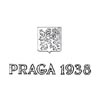 |
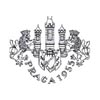 |
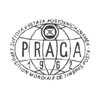 |
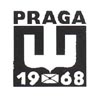 |
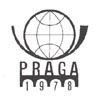 |
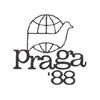 |
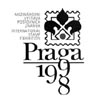 |
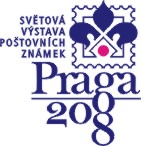 |
PRAGA 1938
The International Stamp Exhibition PRAGA 1938 was held from 26 June to 4 July in the year of the 20th anniversary of Czechoslovakia's independence, but also at a time when the safety of our republic was threatened. It was held under the auspices of the president of the republic, Dr. E. Beneš, and with the patronage of the International Philatelic Federation (FIP). On the Board of Honour were the chairmen of the Chamber of Deputies and the Senate, the Ministers of Post and Telegraph and of Foreign Affairs, the Mayor of Prague, eleven more Czechoslovak representatives and diplomatic delegates from forty countries.
The Committee of Honour of the exhibition was very large. The list of foreign members takes up five pages and the Czechoslovak members another five pages of the exhibition catalogue.
The international jury (then called the judging board) had 35 members. Among them we find such famous names as L. Dubus, Anton Kumpf-Mikuli, A. Laszkiewicz, Hermann E. Sieger and Prof. M. Wagner, who are still household names even seventy years later. Only 25 jury members participated in the actual judging of exhibits, however, and the others did not appear.
The exhibition took place at several venues in Prague. The main exhibition building was Národní dům (National House) in Vinohrady. Besides exhibits, the philatelic bourse, post office and information desks were located there, and the postal bus was in front of the building. Philatelic publicity films were shown in the Minuta cinema. A smaller part of the exhibition and congresses took place in Hasičský dům (the Firemen’s House) on the corner of Blanická and Římská streets. The second international exhibition of philatelic literature was housed in a building then called Dům zemědělské osvěty (Centre for Agricultural Education). The exhibition block of stamps was also printed and sold there.
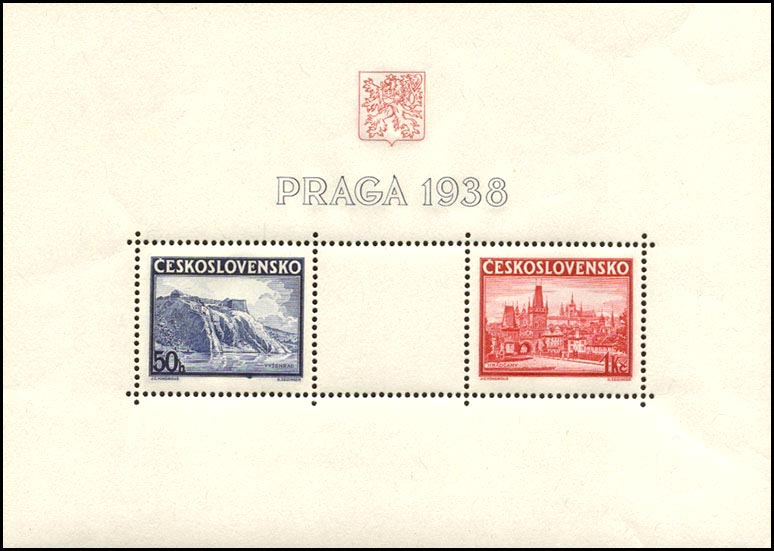
J. Vondrouš, K. Seizinger: Block of Stamps for the PRAGA 1938 International Stamp Exhibition
The exhibition was officially opened in the Vinohrady Theatre. An international congress and philatelic dealers’ bourse took place in the Sladkovský Hall of Obecní dům (Municipal House), where a banquet in honour of the FIP and the official guests of the exhibition was also held. A rich programme with a variety of trips and excursions was also prepared for them.
The exhibits - 513 of them in all - were divided into 19 classes, which were further split into groups, sections and parts. 23 post offices were represented in the official exhibition of postal administrations. The greatest attention was enjoyed by the artistic stamp designs in the Czechoslovak exhibition and the classic rarities from Great Britain. In addition to the exhibition, 13 exhibits were displayed in the Court of Honour, and those must had been a real pleasure for all of the visitors. It will suffice just to list a few of the titles: Sea mail letters from various parts of the world since the 18th century, Balloon post from the time of the Franco-Prussian War (1870-71), Mauritius (1847-59), Military and naval letters (from British colonies in the pre-stamp period) or classic issues from Great Britain, New Zealand, China, Argentina and Sudan.
In the Honour Class there were 10 exhibits, and they too, of course, were a treat for the eyes. The Prague collector Adolf Passer exhibited rare sheets of Turkish stamps, and another legend of world philately, Théodore Champion from Paris, displayed Rarities of the Whole World, the list of which takes up all of six pages in the catalogue.
Countries were divided into classes and groups geographically with sections of general, specialized and study collections in each.
Aerophilatelists had their own class at the PRAGA 1938 exhibition containing nearly thirty exhibits, many of them certainly very interesting.
Exhibited under the unusual sounding name of Special Stamps were mainly what would be considered from our current point of view to be motif-based and thematic collections (e.g. the Red Cross, mourning stamps, sports, elephants, history of art, philatelic exhibitions), as well as exhibits of the stamps of local and private post offices.
Four exhibits of postal stationery had their own class, and the forerunners of today's postal history exhibits could be found in the class entitled Pre-Philatelic Letters and Collections of Postmarks. 16 exhibits were displayed in the young philatelists’ class.
The philatelic literature class was also pretty full. Among other exhibits was “A Philately Course and Post Office Reform 1837 – 1937” by Karel Basika.
How did the largest international philatelic exhibition held in the country between the two world wars turn out? The highest award – the exhibition prize donated by president Beneš – went to W. S. Alfieri from Alexandria for an exhibit of Greek stamps from the years 1861 - 86. In total, 45 honorary prizes, 12 large and 30 small gold medals, 53 large and 88 small silver and 87 bronze medals, 13 vermeil and 25 silver plaques were awarded. Czechoslovak exhibits won 4 small gold and 19 large silver medals.
How was the exhibition rated by the philatelic press of the time? Tribuna filatelistů (the Philatelists' Tribune) was eloquent in its appreciation, while also not sparing criticism. Praise was given to the organizers and also to leading foreign philatelists (who deserved it for gathering a large quantity of valuable foreign exhibits in Prague at such an uncertain time) and also to the Ministry of Post and Telegraph, which financed the exhibition.
Criticism was aimed at bad timing (the 10th Sokol sports festival took place at the same time in Prague) and the venue. Compared to other international philatelic exhibitions at that time, there were relatively few foreign exhibits in Prague, only a bit over 60%, and the large number of Czechoslovak jury members (ten) was also criticized. It was said that many of the Czechoslovak exhibits, almost 50, did not meet the standards of an international exhibition and should have been refused by the organizing committee. On the whole, however, the domestic exhibits did not get lost among the competition from abroad.
Some irritation was caused by the FIP decision to cancel the order of 10 000 exhibition stamp blocks. The exhibition catalogue was also criticised, especially for the inaccurate and unprofessional translations of the descriptions of foreign exhibits.
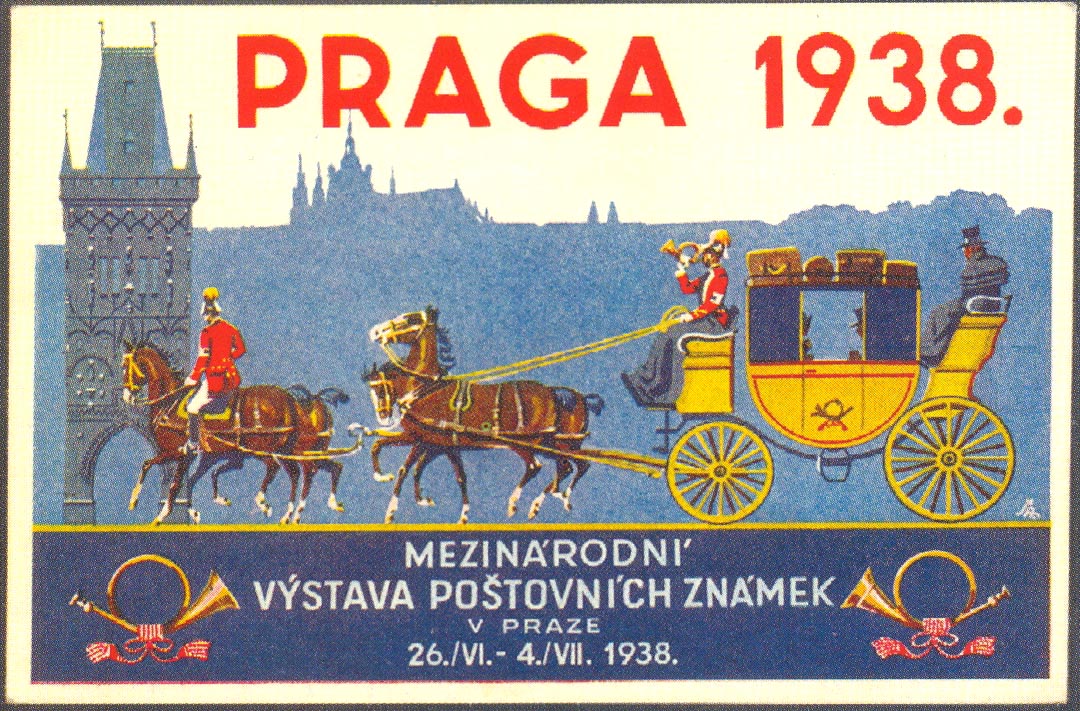
Picture-postcard for the PRAGA 1938 International Stamp Exhibition
 PRAGA 1955
PRAGA 1955
PRAGA 1955, the first post-war international postage stamps exhibition, was held in the year of the 10th anniversary of the liberation, from 10 to 25 September, under the auspices of the president of the republic, Antonín Zápotocký, and with the support of the FIP.
The slogan of the exhibition was “International Postage Stamps Exhibition Contributes to Understanding between Nations and Strengthens Peace.”
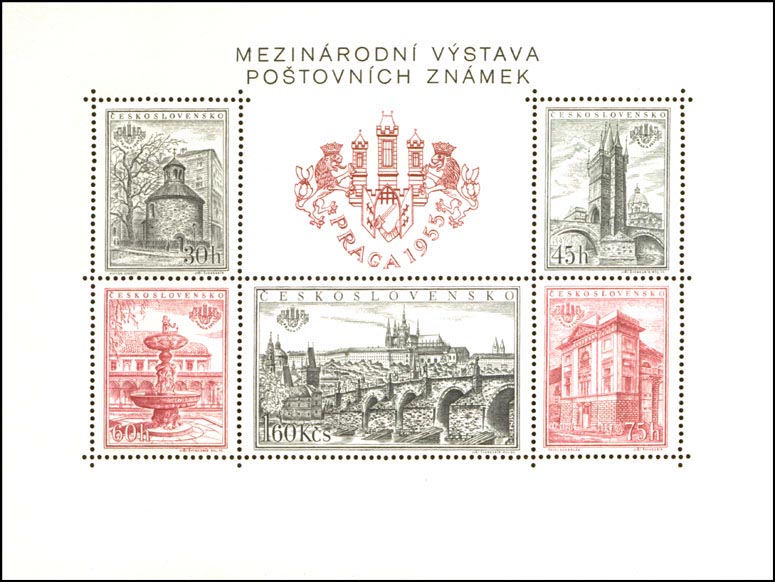
V. Stretti, P. Sukdolák, J. Švengsbír: Block for the PRAGA 1955 International Stamp Exhibition
The exhibition took place in two locations not too far apart - at Slovanský ostrov (Slavic Island), where philatelists’ exhibits were located, and in the Mánes exhibition hall, where the exhibits of the official class (23 postal administrations) were placed.
The Committee of Honour included eighteen foreign philatelists headed by L. Berthelot and more than sixty Czechoslovak philatelists.
The international jury had eighteen members, seven of whom were from Czechoslovakia. The jury was headed by FIP chairman L. Berthelot, and the honorary chairman was K. Ptačovský.
PRAGA 1955 also offered a rich accompanying programme, including a gala performance of Smetana's Libuše in the National Theatre. Among the attractions of the exhibition was a ride through Prague in a historic stagecoach.
According to the regulations, an exhibit in the competition classes could occupy (excluding exceptions) up to five frames of ten sheets.
Nine exhibits not included in the competition - mainly from jury members - were also displayed. 20 exhibits were competing in the national class. The other exhibits were divided into competition classes according to geographical origin and topics. Almost 320 exhibits took part, about one third of which were from abroad (from 16 countries). The greatest number of exhibits were thematic (more than 100), but the average size was only two frames. Exhibited in the Philatelic Specialities class were pre-stamp letters and cancellations, philatelic rarities, private and local posts, postal stationery, reprints and postal forgeries.
The PRAGA 1955 International Exhibition exceeded all expectations - it had 102,400 visitors.
Both main prizes stayed in Czechoslovakia. The International Grand Prix donated by the president of republic was awarded to Jaroslav Kovařík for the exhibit Austrian Stamps from the Years 1850 - 1918 and the National Grand Prix went to Jan Mrňák. Eight more exhibits (five of which were from Czechoslovakia) won gold medals. All of them were exhibits of classic stamps or pre-war Czechoslovakia and aerophilately.
A series of meetings with leading FIP officials took place during the PRAGA 1955 exhibition and aimed at organising the first World Stamp Exhibition in Prague. The next FIP congress then officially approved this goal.
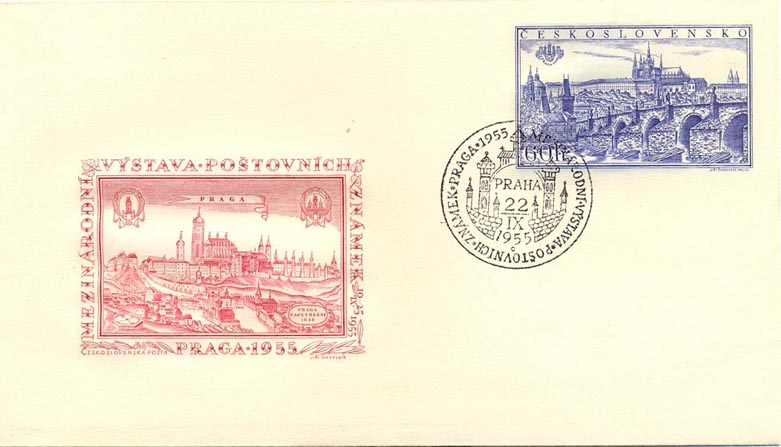
J. Švengsbír: Stationery envelope for advertising the PRAGA 1955 International Stamp Exhibition
PRAGA 1962
The first World Stamp Exhibition - PRAGA 1962 - was held in the year of the 75th anniversary of organised philately in Czechoslovakia under the slogan "For Friendship between Nations and to Strengthen Peace on Earth." It took place from 18 August to 2 September 1962 in the Industrial Palace (Congress Palace) and in the then quite new Brussels Pavilion in the Prague Exhibition Centre (then called the Julius Fučík Culture and Leisure Park).
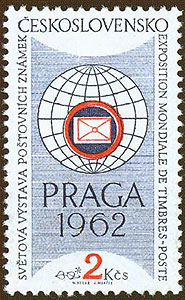
M. Hegar, J. Mráček: Postage Stamp for the PRAGA 1962 World Stamp Exhibition
The exhibition was organised with FIP authorisation, again under the patronage of the President of Republic, Antonín Novotný who, leading the official delegation, opened the exhibition. At the moment of the ceremonial opening, five thousand pigeons flew up carrying a message of peace printed on special postal stationery - pigeongrams.
The exhibition committee, led by Deputy Minister of Transport and Communications Juraj Maňák, had 120 members. Architectural work was performed by the creators of the Czechoslovak stand at EXPO 1958 in Brussels.
At the exhibition there were 64 official exhibits of postal administrations and philatelists from 85 countries around the world participated. The whole exhibition occupied 6500 frames. To show better the results of philatelists' activities in individual countries, the traditional division of exhibits into classes was not observed at the PRAGA 1962 exhibition. Regardless of the contents of the exhibits, they were arranged according to the exhibitors' countries of origin. Individual countries thus formed their own independent exhibitions within the world exhibition.
The development of postal services since the 16th century was documented by the Postal Museum's exhibition of post offices, uniforms and post office devices and equipment.
The PRAGA 1962 exhibition, too, had a very rich accompanying programme. In the Exhibition Centre, a variety of attractions and entertainments was also organised for non-philatelist visitors. Among the philatelic attractions, stagecoach and helicopter post received well deserved attention.
On 19 and 20 August, a conference of editors of the philatelic press took place with the participation of 53 editors from 15 countries in Europe and overseas as well as Czechoslovak journalists. At the end, the charter of the International Association of Philatelic Journalists (AIJP) was approved. P. Seguy from West Germany was elected as chairman of the association.
30 August was Youth Day, and on the last day of the exhibition there was a meeting of philatelists from delegated clubs all over the country with the leading functionary staff of the central bureau at the time.
At the close of the exhibition (30 Aug. - 1 Sept.) an FIP congress was held and 1 September was celebrated as FIP Day.
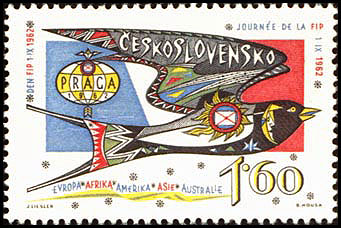
J. Liesler, B. Housa: Postage Stamp issued for the FIP congress
Exhibits were judged by the 36 jury members, again headed by Lucien Berthelot. The secretary was Ladislav Dvořáček. In the jury were 24 members from abroad (one member of the originally planned jury did not appear). The jury worked for ten days; apart from the displayed exhibits they also had to examine material stored in safes.
The honorary prize donated by the president of Czechoslovakia was awarded to the USSR official exhibit. The jury awarded the International Grand Prix and a gold medal to P. J. Pannetier from France, the National Grand Prix and a gold medal to P. Zajíček for the exhibit “The Postal Services in our Territory 1780 – 1910”. A special prize for the best exhibit of Czechoslovak stamps presented by a foreign collector, together with a silver medal, went to the well-known collector J. J. Verner from the USA. Altogether 933 medals, plaques and diplomas were awarded. Out of the fourteen gold medals, four were awarded to Czechoslovak exhibitors (P Zajíček, Dr. S. Zrubec, J. Karásek and Z. Kvasnička).
The PRAGA 1962 World Exhibition was publicised not only in the magazine Filatelie (Philately), bulletins and the press, but also in radio broadcasts in ten languages. This included a competition for foreign listeners with valuable prizes.
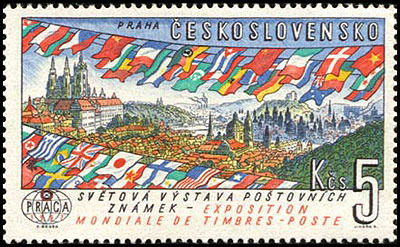
C. Bouda, L. Jirka: Postage Stamp for the PRAGA 1962 World Stamp Exhibition
A competition was also organised for young philatelists, and another competition was held for photographs with a philatelic theme.
Thanks to the provision of many attractive exhibits including popular stamps from the island of Mauritius or attractive new stamps with Soviet cosmonauts, the exhibition was also in the centre of attention of the broader non-philatelic public. On weekdays the number of visitors exceeded ten thousand and on Saturday and Sunday the entrance had to be closed due to overcrowding of the halls. In all, the exhibition had about 283,000 visitors.
Having mentioned praise of the event, we should also remember that there was criticism of the insufficient number of printed copies of the catalogue (disproportional to the interest), and certainly not only because of the enclosed black print of Cyril Bouda's airmail stamp.
PRAGA 1968
The next World Stamp Exhibition took place in Prague after a break of only six years, from 22 June to 7 July 1968. It was a part of the celebrations of the 50th anniversary of the independence of Czechoslovakia and the 50th anniversary of the issue of the first Czechoslovak postage stamps. The slogan of the exhibition was "Philately: a World of Knowledge and Peace." The exhibition was held under the patronage of the President of the Republic, Ludvík Svoboda, who also opened it, and under the auspices of the FIP.
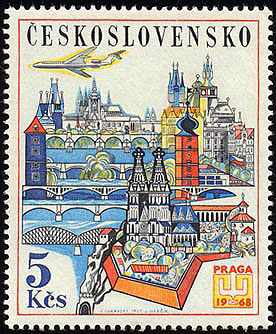
J. Lukavský, J. Herčík: Stamp for the PRAGA 1968 World Stamp Exhibition
The presidium of the exhibition and the international jury were headed by FČSF chairman Ladislav Dvořáček.
The conception of the PRAGA 1962 exhibition with "national pavilions" was abandoned. The exhibits were divided into classes in the traditional way.
The gallery of the creators of Czechoslovak postage stamps had a place reserved within the exhibition.
The majority of the competitive exhibits were displayed in the Palace of Industry (Congress Palace in the Julius Fučík Culture and Leisure Park), other exhibits were in the Sports Hall and several prefabricated pavilions were set up in open areas. The official exhibition of postal administrations was displayed in the U Hybernů palace.
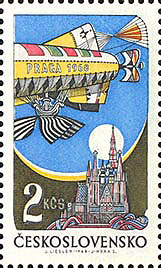
J. Liesler, J. Schmidt: Stamp for the PRAGA 1968 World Stamp Exhibition
The top exhibits of the Honour Class and Court of Honour were displayed in the central part of the Palace of Industry. In the Sports Hall there was also an exhibition called “Post Offices Yesterday and Today”.
Besides the usual postal counters and a special balloon post (they were launched in Letná park by two living legends - General Umberto Nobile and František Běhounek) or stagecoach post, there was also an historic Italian post office at the exhibition. That also, of course, had its own commemorative cancellations.
Philatelists and non-philatelist visitors enjoyed the particularly popular, attractive stamps. Though the presentation of a sample from the British Royal Collection failed to appear, the legendary collection from Mauritius was at the event, as well as the most famous Czech rarities, such as the inverted overprint Pošta Československá 1919 on the four-crown stamp on granite paper or the 50/50 provisional postage due stamp. These two stamps were also reproduced on the exhibition entrance ticket, so they were taken home by every visitor at least in this form. It is perhaps needless to say that there were long queues to view the real rarities.
In the Court of Honour there were not only rare, especially classical, stamps to be admired, but also unique entires, including, for example, letters from the 14th and 15th centuries, sea mail or the first balloon post.
Also among the other exhibits, everyone certainly found something for himself. Every philatelist found what he himself collected or was interested in, while the ordinary visitor stopped for example at the exhibit with the attractive title of “Espionage and Propaganda in the History of the Second World War”, or at the box containing around a million of our most common stamps.
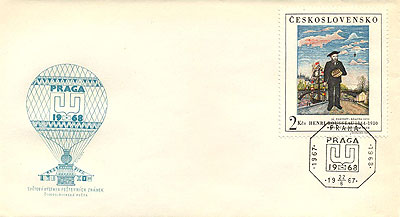
After a self portrait by Henri Rousseau, J. Švengsbír: FDC with Stamp for the PRAGA 1968 World Stamp Exhibition
PRAGA 1968 was the largest philatelic exhibition in history up until that time. In the official class there were exhibits from 150 postal administrations. The exhibition had almost 10,000 frames, so it was very time consuming even just to browse everything.
The number of visitors was also a record - 345,000 people came in the course of 16 days, about 60,000 of them from abroad.
The exhibition jury had 55 members from 23 countries around the world (including observers), 14 of whom were from Czechoslovakia. In the history of stamp exhibitions, this was the greatest number up until that time. Many jury members had already had many experiences at international and world exhibitions. They had five days to decide who would be awarded which exhibition medals. One sad occurrence was the death of Jan Mrňák, one of the jury members, on the opening day of the exhibition.
The jury awarded 962 medals and diplomas in the competition classes, 66 of which were gold medals. A further 209 exhibits not included in the competition class were displayed.
The International Grand Prix, donated by the chairman of the National Assembly, was won by Horst Knapp for his study exhibit of the classic stamps of Saxony. The National Grand Prix, donated by the Prime Minister of Czechoslovakia, went to Z. Kvasnička's exhibit. The Great Honorary Prize, donated by the President of the Republic, was won by Pietro Provera from Italy for stamps of old Austria and Lombardy-Venice.
In the exhibition's rich accompanying programme there was space and time for specialised seminars, conferences, a workshop for young philatelist club leaders and an AIEP meeting. Once again an FIP congress was held at the end.
Once again, the organisers received many eloquent expressions of spoken and written appreciation.
 PRAGA 1978
PRAGA 1978
The PRAGA 1978 exhibition was held from 8 to 17 September 1978. The slogan was extended in comparison with that of the previous exhibition: “Postage Stamps and Philately - A World of Knowledge and Peace”. Each day of the exhibition had its own title and character.
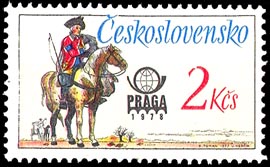
K. Toman, J. Herčík: Postal uniforms – Postage Stamp for the PRAGA 1978 World Stamp Exhibition
Besides the by now traditional venues - the Exhibition Centre (the Industrial Palace and Brussels Pavilion) and U Hybernů exhibition palace, a special part of the exhibition - Art and the Stamp - was in the Prague Castle Riding Hall. There, until October, visitors could compare original works of art with their reproductions on postage stamps.
The exhibits of postal administrations were again sheltered at U Hybernů. Besides being the venue for post office counters and the POFIS shop, the Brussels Pavilion also played host to meetings with the creators of stamps, autograph signing sessions and film showings.
Numerous accompanying events once again formed a part of the exhibition. Special mail was delivered by helicopters and balloons. Many foreign philatelists lectured at the specialised seminars on individual days of the exhibition.
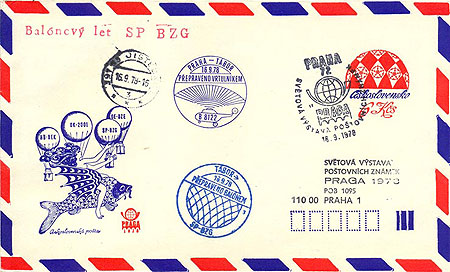
I. Strnad: Airmail stationery cover – balloons from Tábor for the PRAGA 1978 World Stamp Exhibition
Before the opening of the exhibition, the 47th FIP congress was held, confirming Jacques Stibbe from Belgium in his function as the new chairman.
While the previous exhibition, PRAGA 1968, had less than a thousand exhibits, 1405 exhibits were displayed at PRAGA 1978 (including 250 exhibits of literature). The record scale of the exhibition was, of course, one of the organisers' aims from the very beginning. If we add the 143 official exhibits of postal administrations, the total number then exceeded one and a half thousand.
The Court of Honour once again gathered together the cream of the exhibits of the world's top philatelists, decorated with many medals. Classical material of course dominated these exhibits.
The legendary Mauritius collections were present, of course. In the Court of Honour, the Czechoslovak stamps in Zdeněk Kvasnička's and James Matejka's exhibits could also be admired. Royal exhibitors also made an appearance, with exhibitions of selections from the collections of the Queen of England and the Prince of Monaco. Both philatelists and ordinary visitors must have stopped at the unusual exhibit of Space Post. One letter was sent directly to the PRAGA 1978 exhibition by the first Czechoslovak cosmonaut Vladimír Remek. Along with his Soviet partner Gubarev he was one of the most prominent visitors to the exhibition.
Many visitors from the rank of non-philatelists were, of course, attracted mainly by the opportunity to see in person a one-of-a-kind stamp surrounded by legends: the British Guyana one cent stamp. As it was printed on the exhibition admission ticket, all visitors took home a reproduction of it.
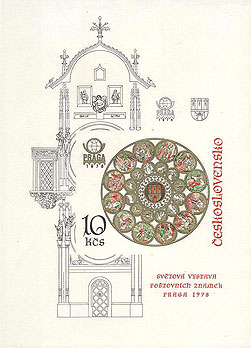
A. Podzemná, M. Ondráček: Old Town Astronomical Clock in Prague – Block of stamps for the PRAGA 1978 World Stamp Exhibition
137 exhibits from Czechoslovak philatelists were put into competition classes and passed the strict selection procedure to qualify. In addition, fifty Czechoslovak exhibits outside the competition classes were displayed. The collective non-competition exhibit containing philatelic materials from Czechoslovakia and Czechoslovak postage stamps was unusual and attracted well deserved attention. It covered an imposing 170 frames. Eighteen philatelists contributed selections from their collections to this exhibit. It contained rarities which could not be seen together anywhere else.
Certain foreign philatelists sent more than one exhibit. The record-holding participants were the philatelists Jean Poulie, displaying 14 exhibits in various classes covering a total of 230 frames, and E. Martin de Bustamente with the same number of exhibits on 85 frames.
Due to the number of exhibits to be judged, the number of jury members was also a record. The 75 members of the international jury from 29 countries included five honorary members and ten observers. Six days were reserved for judging of the exhibits. Again, the jury was led by Ladislav Dvořáček, the president of the exhibition presidium.
The highest appraisal of a competition exhibit - the Great Honorary Prize donated by the President of the Republic - went to the Japanese philatelist R. Ishikawa's exhibit of Hawaiian stamps containing many unique pieces. The International Grand Prix went to G. Barcella from Italy for a study exhibit of stamps of the old Italian state of Romagna. Max Mahr from West Germany won the National Grand Prix for his exhibit of Czechoslovak stamps. Large gold medals were awarded to 40 exhibitors total, which was the greatest number in the history of international and world exhibitions up until that time.
The most successful Czechoslovak exhibitor was V. Kovář (a study exhibit of Czechoslovak stamps, particularly of the Pošta Československá 1919 overprints), who carried off a large gold medal and a special prize. Eleven more Czechoslovak collectors won gold medals. Not one Czechoslovak exhibit, however, won a bronze medal; this also shows the strictness of the selection procedure.
For the first time, the exhibits of postal administrations were also judged by a special jury. The great official prize donated by the chairman of the Czechoslovak government went to the Czechoslovak Federal Ministry of Communications. Other prizes were carried off by the post offices of Bulgaria, France, Japan, the GDR, Finland, Austria, Greece and Sweden.
A large number of visitors again attended - 335,800 people, about 50,000 of whom came from abroad.
 PRAGA 1988
PRAGA 1988
The PRAGA 1988 World Stamp Exhibition was held from 26 August to 4 September 1988, once again under the patronage of the President of the Republic, Gustav Husák (who also opened the exhibition) and the FIP. It took place at the traditional venues - the Industrial Palace (Congress Palace), Brussels Pavilion and Winter Sports Hall (thematic exhibits), in the Exhibition Centre (Julius Fučík Culture and Leisure Park) and also in the U Hybernů palace, the Postal Museum in the Vávra house and the Prague Castle Riding Hall (Art and the Postage Stamp - an exhibition of paintings and postage stamps). The CEO of the International Bureau of the Universal Postal Union (UPU), A. C. Botto de Barros, also took part in the opening of the exhibition.
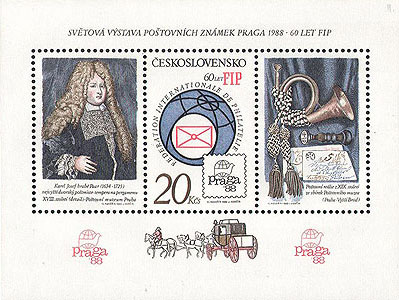
V. Kovářík, J. Herčík: Block of stamps for the PRAGA 1988 World Stamp Exhibition and 60th Anniversary of FIP
The exhibition was visited by more than two hundred thousand people, every one of whom was certainly able to find something interesting. For a number of visitors, the exhibition was a somewhat exhausting experience - not only because of its size and the distances between individual exhibition buildings, but also, for example, because the coupons on the admission ticket allowed entry to each building only once. In most buildings there was not enough suitable space for taking a much needed rest and not enough opportunities for getting refreshments.
Diversity was the aim, which determined in advance the effort to concentrate together the greatest possible number of geographically, thematically and historically diverse exhibits. Traditional exhibits, for example, presented 116 stamp-issuing countries and territories, and over ninety different themes were represented in the thematic philately class. Besides diversity, the requirement for high-quality philately for the accepted exhibits was also fundamental. Exhibits were appraised in accordance with the then newly instituted FIP General and Special Regulations for Evaluation of Competitive Exhibits.
A total of 928 exhibits were judged in the competition classes at PRAGA 1988 (the greatest number - 239 - was in the traditional philately class). 177 titles were judged in the literature class. There were exhibits from 55 countries at the exhibition. The largest number of exhibits was from West Germany (106), whereas there were only 84 Czechoslovak exhibits. There were 47 exhibits displayed in the non-competitive classes. Altogether about 10% of the exhibits were from Czechoslovakia.
The exhibits were evaluated by an international jury consisting of 53 members and 13 observers from the 36 FIP member countries. Twelve jury members and one observer were from Czechoslovakia. The jury was again led by Ladislav Dvořáček.
The Great Honorary Prize of the exhibition, donated by the President of the Republic, went to A. Fillinger from France for the exhibit “The French Army in the Period from Louis XIV to Charles X.” The International Grand Prix was awarded to Z. Mikulski from Switzerland for the exhibit “Russia, USSR 1918 - 1938 and Poland 1858 – 1870”, and the National Grand Prix was awarded to F. W. Hefer from West Germany for “Czechoslovakia 1918 - 1939.”
Popular and media-popularised items again enjoyed the attention of non-philatelic visitors, like the legendary Mauritius exhibit (from the collection of H. Schnabel of West Germany) or the collection of Olympic philately of the President of the International Olympic Committee, Juan Antonio Samaranche, despite of the fact that he had not sent the best of his collection, which was exhibited at the Olymphilex exhibition in Seoul.
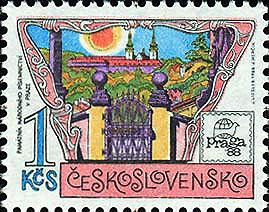
J. Liesler, J. Herčík: Memorial of the National Literature in Prague - Postage Stamp for the PRAGA 1988 World Stamp Exhibition
In the Congress Palace there was also an exhibit commemorating one hundred years of organised philately in this country, and there were so-called philatelic studies, non-competitive exhibits showing and publicising new trends and branches in philately.
At the exhibition there was the opportunity to buy United Nations and also Finnish and Aland Islands stamps (for Czechoslovak crowns!). The sale of commemorative silver 100-crown coins, issued in honour of the exhibition, also drew the attention of visitors.
Of course, exhibits from both the Czechoslovak postal administration and the Postal Museum took a significant part in the exhibition. The exhibits of foreign postal administrations, the United Nations, the Universal Postal Union and postal museums were located in the U Hybernů palace.
The exhibition programme was very finely itemized and, besides official events, also included cultural and entertainment programmes on the grounds of the Exhibition Centre, film projections, discussions on postage stamps and their creation, autograph signings by stamp designers and also a POFIS international stamp auction in the Congress Centre (Palace of Culture). As part of the exhibition's specialised accompanying programme, among other things, were an international seminar on practical and theoretical issues in Czechoslovak stamps collecting, in which, besides Czechoslovak philatelists, more than thirty guests from abroad took part, and a meeting of the specialised committees of FIP.
On the day before the opening of the PRAGA 1988 exhibition (28 August 1988), the Postal Museum was ceremonially opened - a museum of postage stamps in the Vavra house, a completely reconstructed building near the river Vltava, originally from the middle ages, rebuilt many times in past centuries and known for its mid-19th-century murals on the first floor by Josef Navrátil.
Unfortunately, the production of postage stamps, printing sheets, blocks and postal stationery connected with the PRAGA 1988 exhibition was somewhat too plentiful. 23 postage stamps, 20 printing sheets in miniature sheet arrangement, 9 blocks, 16 first day covers, one stamp booklet and 18 commemorative stationery postcards were issued.
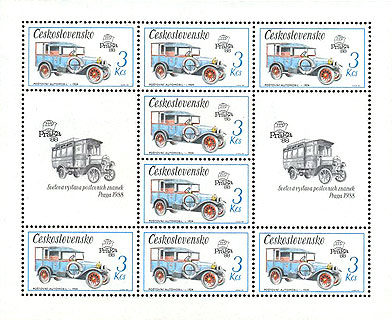
B. Housa: Technical relics – Special counter sheet of stamps for the PRAGA 1988 World Stamp Exhibition
To obtain certain exhibition stamp blocks and special printing sheets, a coupon from the 20-crown adult admission ticket was needed, so these tickets were also bought in advance (from the beginning of June on) by those who only wanted the stamp block and did not intend to go to the exhibition at all. It was possible to obtain these blocks until the end of November. The distribution of some exhibition stamps in the regular distribution service for philatelists was limited. In short, philatelists had to pay for this grand event with a budget of nearly 52 million Czechoslovak crowns.
Some items of the exhibition postal stationery with a relatively high face value of imprinted stamps were reserved for special transport of mail - by stagecoach, balloon or airmail (including greetings to the friendly associated exhibitions FINLANDIA '88 in Helsinki and BULGARIA '89 in Sofia).
It is no surprise that a number of philatelists were, to put it mildly, displeased with so much stamp issuing activity and the high face values, and this was also one of the reasons for the fall in the membership base of the Union of the Czechoslovak Philatelists (SČF).
A large number of commemorative exhibition cancellations (27 kinds in all) were used at the 25 special temporary postal counters at all exhibition venues. In addition, a commemorative cancellation connected with the PRAGA 1988 exhibition was used in the Congress Centre (Palace of Culture) during the 57th FIP congress linked to the exhibition, and in the National Technical Museum for the congress of the International Association of Transport and Postal Museums, even outside of Prague (in connection with special exhibition mail transport). The estimated number of mailed items and various souvenirs processed exceeded 1.5 million.
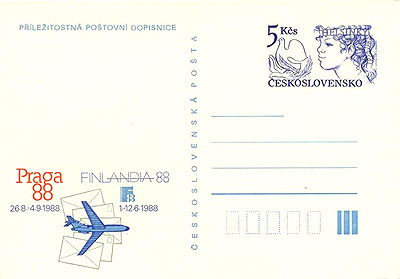
A. Fuchs: Commemorative postal stationery for the exhibitions Finlandia 1988 and PRAGA 1988
If we include the philatelic material with which the PRAGA 1988 exhibition was saluted in nearly twenty more countries, we must say that the philatelic documentation of this exhibition was really exceptionally plentiful.
The PRAGA 1988 exhibition catalogue contained a range of specialised philatelic texts. A separate catalogue was issued for the exhibition “Art and the Postage Stamp”. The publication Československá filatelie (Czechoslovak Philately) was also issued on the occasion of the PRAGA 1988 exhibition and contained a history of the organised philately movement in this country and the SČF general and special regulations for the construction and evaluation of exhibits. About half of the book consists of Basic Philatelic Terminology - a richly illustrated explanatory dictionary. Of basic importance to the broad philatelic public was the Specialised Handbook for Collectors of Czechoslovak Postage Stamps and Postal Stationery, the publication of which was also timed to coincide with the PRAGA 1988 exhibition.
After the exhibition, from the 5 - 7 September 1988, the 57th FIP congress was held in Prague.
Like ten years earlier, the PRAGA 1988 World Exhibition was given a “full stop” in the form of a show of selected exhibits held in Bratislava in October 1989.
|
|
|
|
|
